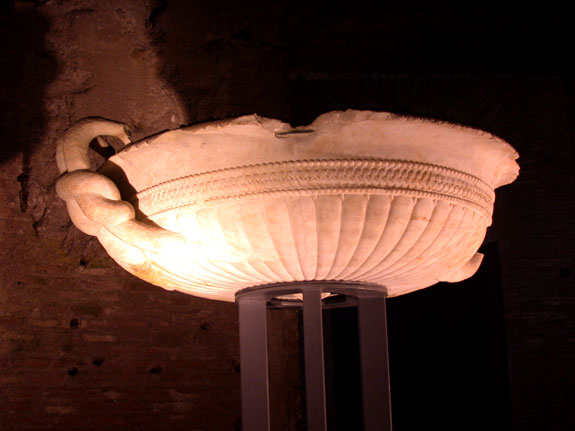|
|
|
|
|
|


Sculpture inside Domus Aurea
This is one of the first things you see when entering. The construction of the Domus Aurea (the Golden House) was considered as one of the craziest enterprises of the city. When two thirds of Rome was burnt down by the big fire in 64 AD, Emperor Nero (54-68 AD) used the free space for a new accommodation. The architects have done all possible things to satisfy his megalomania. The accommodation had to cover four districts. The palace itself radiated a tremendous luxury.
The most important part was a large rectangle at the Oppius hill where the four corner parts covered the four districts. The rooms, halls and corridors were abundantly decorated with gold, silver and precious stones. The eastern wing of the accommodation was used for public receptions. The western wing was the house of Nero. It was said that it had a round dining-room, which turned around day and night, inspired by the revolutions of the earth.
Nero wasn't the sole Roman who loved the 'rus in urbe', the countryside elements and park -like scenery in the city. Vineyards, orchards, vegetable gardens and parks, pastures and forests with grazing herds and animals appeared around the palace, at the Caelius, near the Fagutal - the altar in the holy forest at the Esquiline, and at the Oppius. Near by the entrance of the Domus Aurea stood a gigantic statue of Nero, the Colossus Neronis.
Colossus Neronis represented Nero as sun god. It was a big bronze male statue of 37,2 meters and was carved by the Greek Zenodorus. Later Hadrian (117-138) placed it near the Amphitheatrum Flavium. That's why since the Middle Ages the Amphitheatrum Flavium had the name Colosseum, due to this gigantic statue of Nero.

|
|
|
|